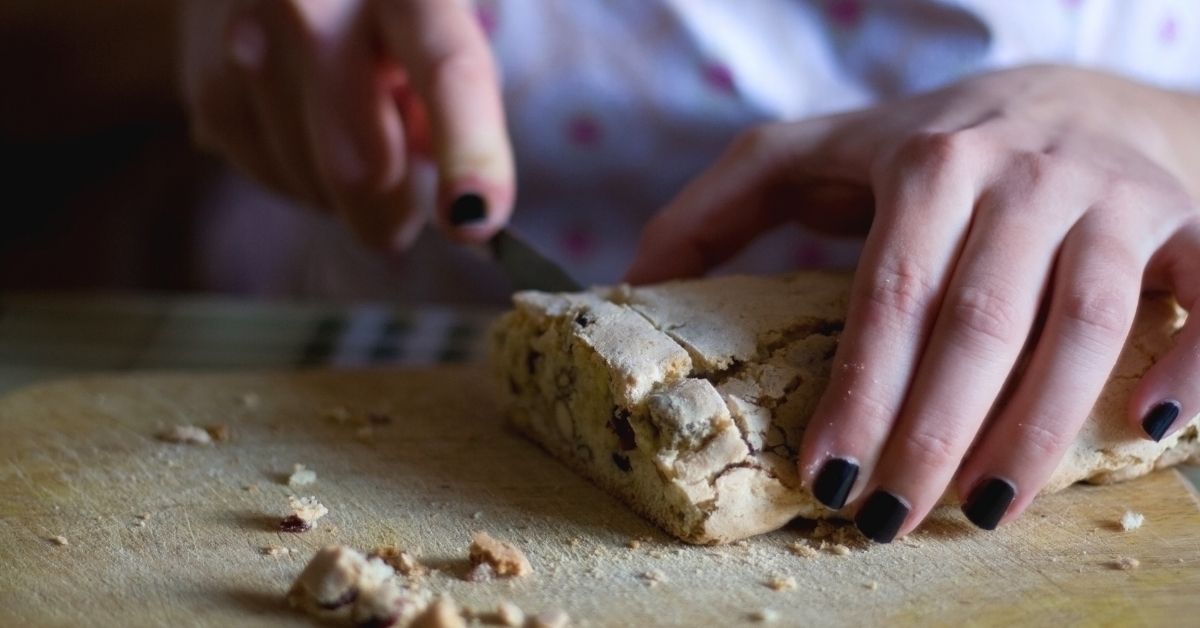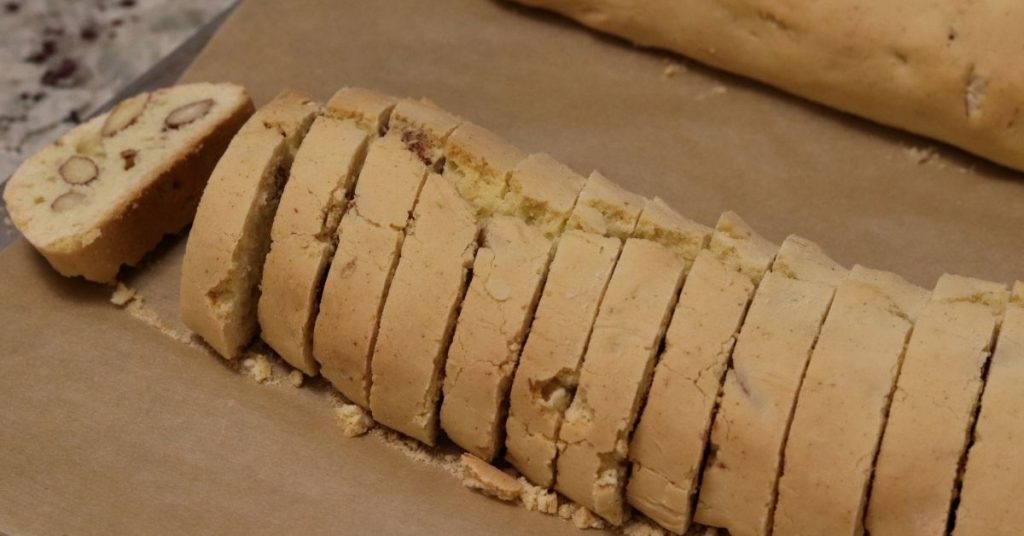How to Cut Biscotti? Best Tips & Tricks

Biscotti are known for their dryness and crumbly texture. Delicious, nevertheless, and an excellent breakfast, dessert, cookie, or peckish snack idea. But as delightful as they are, they can be tricky to cut, and if you don’t cut them properly, you won’t get to enjoy them properly either. So how to cut biscotti without breaking, and what tips and tricks are there to make this easier?
The most important thing when cutting biscotti is the knife, and it has to be a serrated knife (a bread knife). They need to cool a bit before cutting, and you must cut them after the first baking, not the second. This way, biscotti won’t break.
Cutting your biscotti wrong can seriously diminish your biscotti experience. They will crumble and won’t retain their shape and consistency, meaning you won’t be able to dunk or soak them. Therefore, in the following paragraphs, I will explain how to cut biscotti properly, how long they need to cool, why they crumble, and why they crack on top.
How to Cut Biscotti Without Breaking?
Since they are dry, they don’t have much elasticity to work with, which makes their cutting tricky but not impossible. Even though biscotti are supposed to be crumbly, they should stay in one piece.
It would be best to cut your biscotti with a constant forward and backward movement of the knife. You also need to be very gentle, as biscotti are very fragile. Therefore, if you press your knife in them, they will fall apart as you do with cheese or cake.
Touch the biscotti with the knife and let the forward and backward movements do the rest. Whether straight or diagonal cuts is a matter of preference, though I have concluded that diagonal cuts are easier to make while keeping the biscotti whole.
See that you don’t make abrupt and short movements with the knife. Instead, go smoothly and slowly from one end of the biscotti to the other.
What is also important; cut your biscotti fifteen minutes after the first baking.

How Long Should the Biscotti Cool Before Cutting?
The right time to cut your biscotti is fifteen minutes after the first baking. If you cut them straight from the oven, they will fall apart. On the other hand, if you cut them after they have cooled completely, they will become too hard, and you won’t be able to cut them, and you will have to break them instead.
The fifteen minutes after you take them out are just enough time for your biscotti to set and not to become too hard. They will be stable enough to endure the mechanical changes you are about to make and not too hard to prevent you from cutting them.
Anything less than fifteen minutes is too little, and anything more is too much.
- RELATED: What to Do With Cooled Biscotti?
What Do You Cut Biscotti With?
The knife you use to cut your biscotti is maybe the most important factor in preventing them from falling apart. You absolutely must cut them with a serrated knife (a bread knife). The surface of the biscotti needs an uneven blade so you can cut it appropriately.
Therefore using a knife with a smooth blade won’t get the job done; on the contrary, it will only make things worse. You will need to press down with a smooth blade, which is just about the worst thing you can do to your biscotti.
On the other hand, a serrated knife will fit perfectly, considering the movements you need to make to cut your biscotti.
How to Prevent Crumbly Biscotti?
Biscotti are crumbly because they are dry, but that doesn’t mean that they have to fall apart when you dunk them. Remember that biscotti are supposed to crumble, so don’t expect them to be completely smooth and stable. Luckily, there are a few tricks you can do to prevent this.
After the first baking, you can lightly sprinkle water mist on the biscotti and cover them with a cotton towel. This way, they will absorb some moisture and become more elastic so that you can cut them more easily. Don’t go too far, though; you still want them to be crumbly.
Don’t bake them on a humid day. The air humidity is likely to penetrate the biscotti, which won’t allow them to bond properly, giving them an airy consistency, which isn’t a good thing.
Bake them on the side instead of on the bottom on the second baking. This way, they will harden without becoming brittle.
Follow the exact recipe when making the dough and be patient. Sometimes the dough may seem moist, but don’t rush adding more flour. Most likely, the dough needs more kneading and more time to absorb the moisture from the liquid ingredients.
Make sure all of the ingredients are evenly distributed through the dough. Too little butter in some parts of the tough will later make those places crack.
Why Do Your Biscotti Crumble When You Cut Them?
Biscotti is very dry, which means it lacks elasticity after baking. The log becomes brittle and can easily fall apart.
Your biscotti will certainly crumble when you cut them if you apply strength instead of technique. Therefore gentle movements and the right knife are crucial for your biscotti to be stable while cutting them.
Biscotti are cookies supposed to be hard and crumbly; therefore, you need to be very careful with the timing, technique, and knife.
Do not place more than two logs on one tray, as they expand and stick together, making them extremely hard to cut.
Why Are Biscotti Cracking on Top?
Biscotti expand and become larger while baking. The first thing that will bake is their top crust. The inside of the biscotti needs more time to bake thoroughly.
Therefore, while the interior of the biscotti is enlarging, the exterior remains the same, as it has already hardened. As a result, the crust starts cracking because the dough underneath expands.
The top of the biscotti loses stability and becomes the most brittle part of the cookie, and it is most likely to continue cracking as you cut it.
In addition, the top can crack if you bake the biscotti at a very high temperature (350 °F is the right temperature) or if you significantly increase the temperature while baking. Also, if you haven’t kneaded the dough enough for the ingredients to homogenize, the unevenly distributed butter could cause the top crust to crack if that part of the cookie lacks butter.
